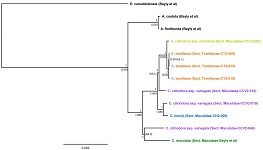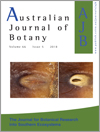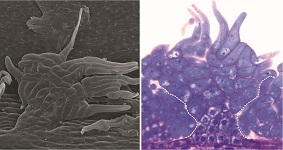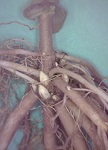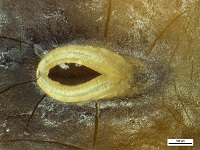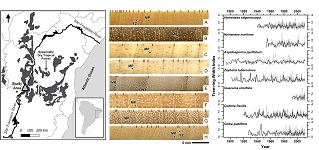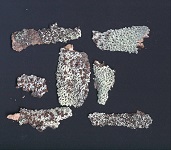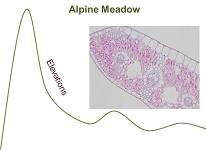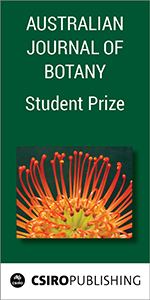Australian Journal of Botany
Volume 66
Number 5 2018
Investigation into hybridisation among Corymbia species is important, as these trees form hybrids capable of transferring genes between species, which has large implications for forestry management. A better understanding of the processes that shaped Corymbia’s evolutionary history will aid research into eucalypt taxa dominance across the Australian terrestrial landscape.
Glands in the stem of a bromeliad species were studied in order to investigate their structural and functional aspects. These glands possess a unique structure and secrete a substance containing polysaccharides that may serve several ecological functions, especially the protection and lubrication of growing leaves. This is the first record concerning a structure of this kind in a bromeliad stem, and thus constitutes an important contribution to the biology of this plant group.
Stevia ovata (candy leaf) has become an invasive weed in parts of the wet-tropics of northern Queensland. We conducted three experiments related to seed germination and longevity to aid in a better understanding of its potential distribution and to aid management. Seeds germinated across a wide range of temperature regimes highlighting Stevia’s potential to expand beyond its current distribution. Soil seed banks were relatively short lived, so regular control over a 2-year period before plants reach reproductive maturity should provide effective management of S. ovata.
The lens is an often overlooked part of the seed coat of acacias. It is critical in controlling physical dormancy. A distinct but minute (usually less than 300 μm length) lens was found in most species. With heat the lens ‘popped’ thus breaking physical dormancy.
Wood samples from 24 native species of the Brazilian seasonally dry tropical forest were analysed to search for distinct growth rings suitable for dendrochronological studies. The macroscopic anatomy of tree-rings and growth modelling based on tree-ring data are a promising tool to study ecology and forest growth of several species from seasonally dry tropical forest. Annual rings were confirmed for seven species by cross-dating and allowed the development of chronologies and the study of the growth patterns.
Lichens are sparse and inconspicuous in the regularly burnt tropical savannas of the Cape York Peninsula bioregion, northern Australia. They are much more abundant in the more restricted areas of rainforests, riparian and coastal vegetation. In this study 423 taxa from 47 families and 126 genera of lichen are recorded for the bioregion. These lichens are mostly found on bark surfaces, and are predominantly pantropical in distribution, but eleven lichen species are only known from the bioregion.
We studied how leaf anatomy changes with altitude and the trade-offs versus coordination of anatomy between leaf and flowering stem. Anatomical traits of three monocot species were studied across an altitudinal gradient in an alpine meadow on the Qinghai-Tibetan. The patterns of plant anatomy variation diverged among species and plant organs, and maybe between sampling periods and extent of the altitudinal gradient sampled, which indicated that general predictions cannot be made based on the relatively narrow research scope.
